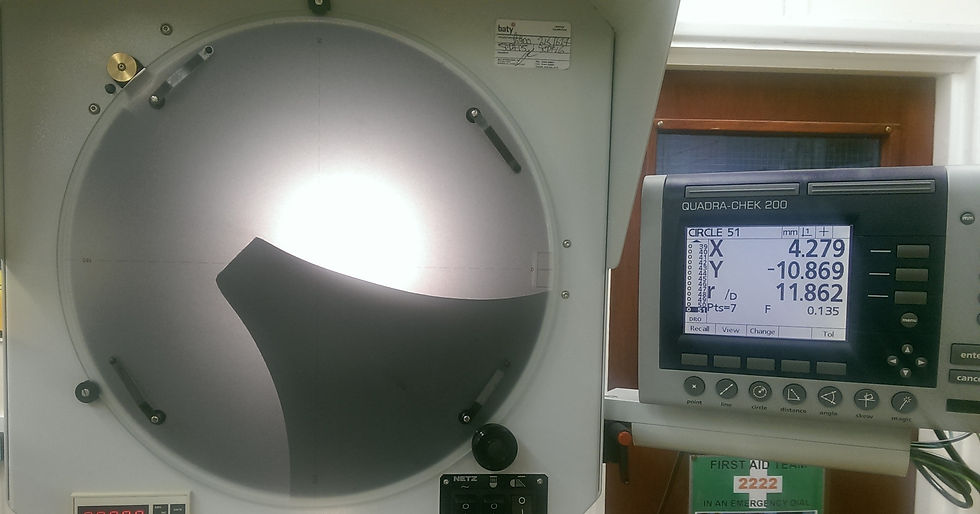Reproducing a Parker T1
nib adjuster
How were the originals made in 1970?
•It would appear the original nib adjusters were pressed out of sheet. Maybe on a power press, but more than likely in a small tool on a fly press manually.
•Believe it or not, the original nib adjusters are roughly made and have inconsistent dimensions. Their imperfections and age are probably what make them so appealing.
•The Parker logo was mechanically engraved, probably on a pantograph type engraver.
•The material appears to be grade 1 or 2, 0.48mm thick sheet titanium, strong, but soft and has as a dull but subtle greyish gold gleam to it. However, Fred Plewa's image in the Pen magazine in 1996 stated they were made of stainless steel.
•The grain produced generally runs in a vertical direction, top to bottom.
•I have no idea how many were originally made. I have seen many originals and several original blanks with no logos on. Once a tool is set up, potentially they could of pumped out thousands at a time.



















How I made it in 2016
Reverse engineered;
•Measured an original T1 nib adjuster.
•Used a shadow graph in a metrology lab to accurately measure the radii.
•Supplied a CAD (Computer Aided Design) engineer with the dimensions to enable them to model it.
•Using CREO software they produced a 3rd angle projection and isometric view, this produced a 2D and 3D model.
•Printed a hard copy of drawings.
•3D printed 1:1 and 2:1 solid models.
•Generated a .DXF file from the electronic drawing so a CNC (Computer Numerically Controlled) machine can understand the dimensions.
•Supplied Production Engineer with drawings and DXF file. They used RADAN CAD CAM software to generate the CNC program and down load this to the CNC laser cutter. The half a million pound machine uses a 4kW laser to accurately and consistently cut out any shape programmed in to it to a very tight tolerance.
•I chose 0.5mm thick 316 stainless steel sheet. This is corrosion resistant so will not rust, pretty tough and should hold up to damage on the screw edge. It’s slightly shinier / brighter than titanium, but unless you’re familiar with the different grades of titanium and stainless, it’s very hard to tell the difference.
•The logo is engraved, but unlike the old original type which I believe was manually engraved in the traditional mechanical way after being pressed out, mine are laser engraved at the same time. The down side is, under an eye glass, the old original versions have a more crisper and consistent cut, from a sharp cutter. My laser engraved ones have a very small start and finish point and a ‘fluffy’ finish from the laser whilst ‘burning’ the logo. They also had soot / light burn marks, although these cleaned up very easily.
•Next they are deburred. Any sharp edges are removed.
•The grain is put on vertically like the originals using the correct grade of abrasive.
•Then bagged up individually to avoid scratches.
The end result is a reproduction T1 nib adjuster reverse engineered and much more accurate dimensionally than the originals. If you know your T1’s and own an original nib adjuster then you may spot the tiny differences (which aren’t many at all). As you can see from the description and photos, it took a lot of time, involvement from different skilled engineers, processes and effort just to make this one ‘simple’ component. Just think of the cost, time and skilled man power to make all the machines, tooling and run production for the actual T1 pen in the 1970’s without computers. That’s how good the old Parker Pen Toolmakers were that taught me. They were considered the Rolls Royce of Toolmakers and that’s why the older pens, in my opinion, are far superior to some of the modern writing instruments produced today!
I thought a lot about this project before committing to it. I knew I could make one easily with access to the right machines, but I wanted to reproduce it using modern techniques and document it. I can probably safely say I’m likely to be the only person in the world to reproduce T1 nib adjusters accurately and consistently in a production environment since the 1970’s. I can’t say I learnt any thing new, but I can appreciate even more the lengths Parker went to when producing original quality pens. If I was to put a price on my nib adjusters, they’d be more expensive than a few actual T1 fountain pens put together, but that wasn’t the exercise! They may not be original, but their authenticity and quality is as close as your get to the real thing!
